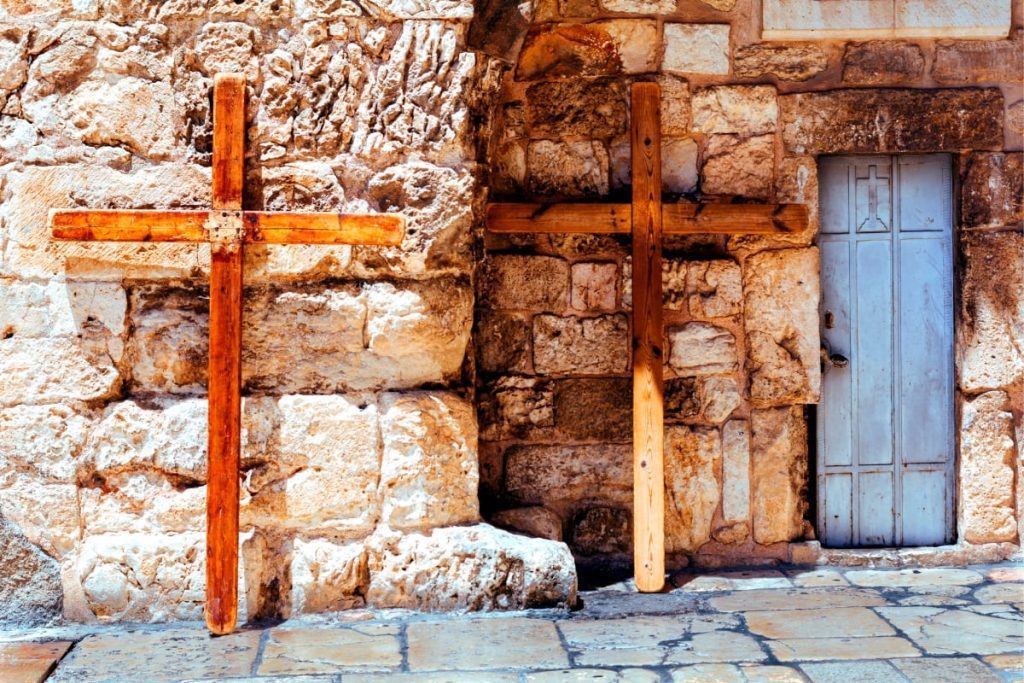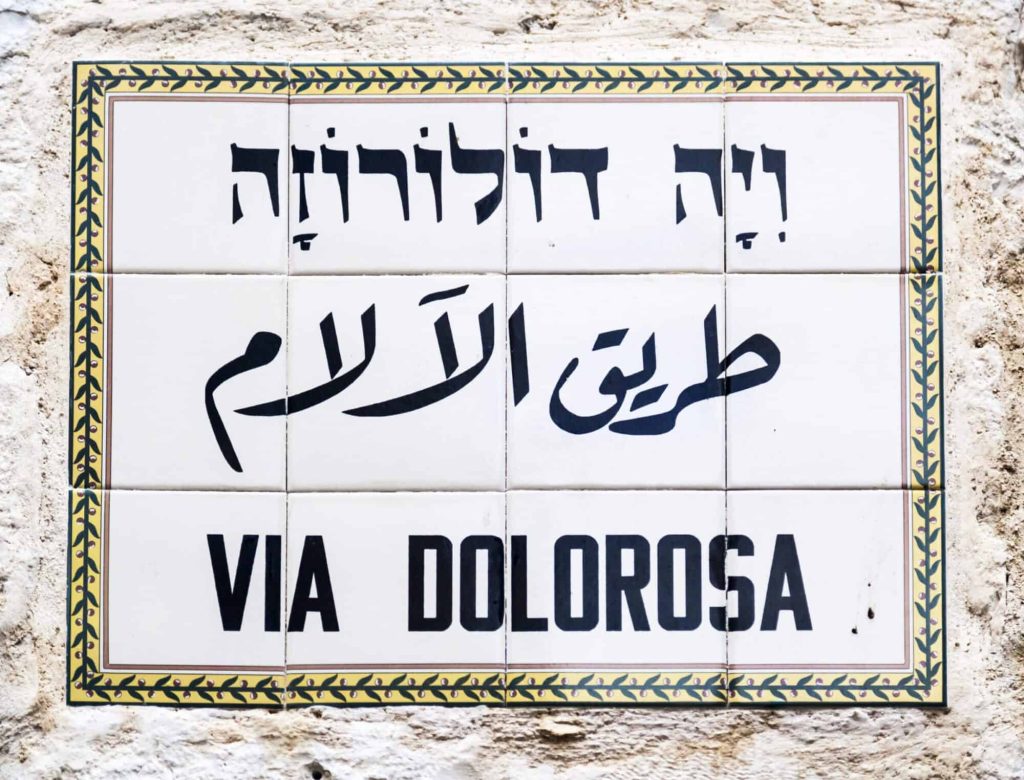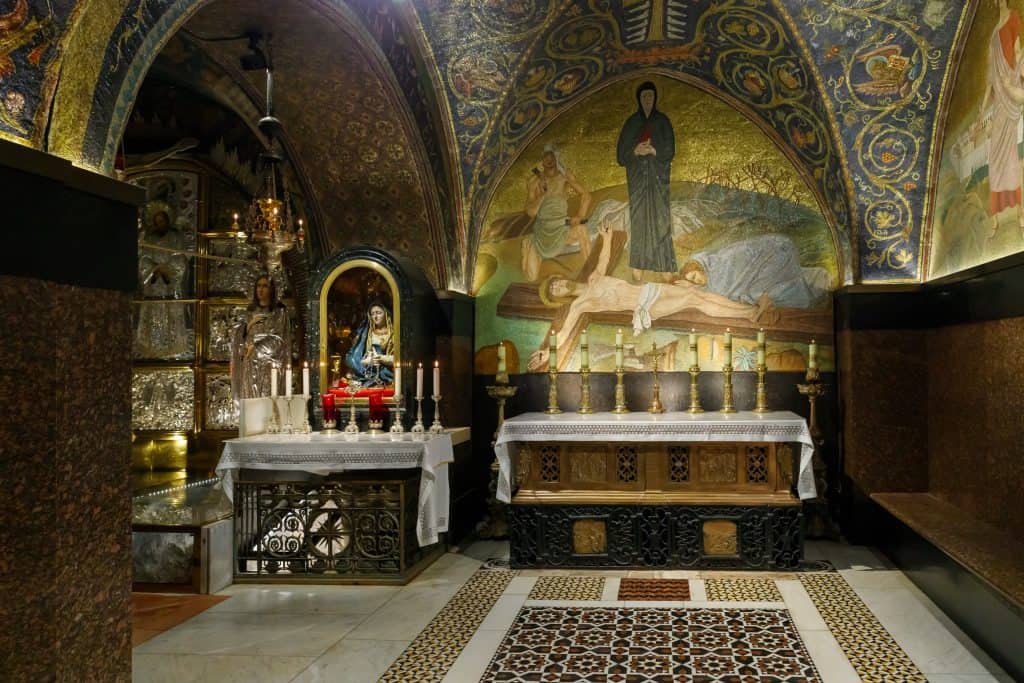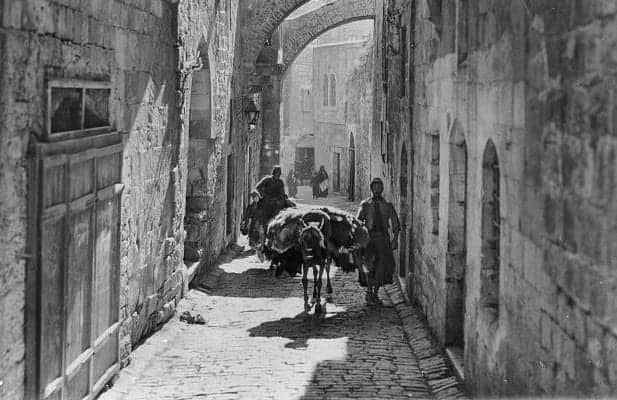The Via Dolorosa is a processional route in the Old City of Jerusalem that is believed to be the path that Jesus took to his crucifixion. The winding route from the former Antonia Fortress to the Church of the Holy Sepulchre—a distance of about 600 meters (2,000 feet)—is a celebrated place of Christian pilgrimage. The current route has been established since the 18th century, replacing various earlier versions.

The name Via Dolorosa means “Way of Sorrows” in Latin. 14 Stations of the Cross mark the route, and commemorate events mentioned in the New Testament and Christian tradition. So the first nine stations are located along the Via Dolorosa, while the final five are inside the Church of the Holy Sepulchre.
Moreover, the Via Dolorosa is a popular destination for Christian pilgrims from all over the world. Many pilgrims walk the route barefoot or on their knees as a sign of penance. Furthermore, the route is also a popular tourist destination, with many souvenir shops and cafes.
The Via Dolorosa is a sacred place for Christians and a reminder of the suffering that Jesus endured for their sake. It is also a place of hope, as it is the path Jesus took to his resurrection.

The Different Stations of the Cross
Along this sacred route are 14 Stations of the Cross, each representing a specific event during Christ’s Passion. These stations serve as points of reflection and prayer for Christians worldwide. Let’s elaborate on each station:
- Jesus is Condemned to Death: Located at the Antonia Fortress, this station commemorates the moment when Jesus was condemned to death by Pontius Pilate, the Roman governor of Judea.
- Jesus Takes Up His Cross (Gaabbtha): In this station, it is believed that Jesus took up his cross and began his journey towards Golgotha, where he would be crucified.
- Jesus Falls for the First Time: Traditionally, this station marks the first of three times Jesus is said to have fallen under the weight of the cross on his way to Golgotha.
- Jesus Meets His Sorrowful Mother, Mary: This station honors the poignant encounter between Jesus and his mother, Mary, along the Via Dolorosa.
- Simon of Cyrene Helps Jesus Carry the Cross: According to tradition, Simon of Cyrene was compelled to help Jesus carry his cross, relieving the exhausted Savior.
- Veronica Wipes the Face of Jesus: The compassionate act of Veronica wiping the face of Jesus, leaving an imprint of his image on her clothes, is commemorated in this station.
- Jesus Falls for the Second Time: The second fall of Jesus under the weight of the cross is marked at this station.
- Jesus Meets the Women of Jerusalem: Jesus consoles the women who mourn for him, urging them to weep not for him but for themselves and their children.
- Jesus Falls for the Third Time: The final fall of Jesus is commemorated at this station, symbolizing the culmination of his physical suffering.

The Last Stations in the Church of the Holy Sepulcher
10. Jesus is Stripped of His Garments: This station marks the moment Jesus’ garments were removed before his crucifixion.
11. Jesus is Nailed to the Cross: At this station, the crucifixion of Jesus takes place on Golgotha, the hill traditionally believed to be the site of his crucifixion.
12. Jesus Dies on the Cross: Here, the death of Jesus on the cross is commemorated, a profound moment of sacrifice and redemption.
13. The Body of Jesus is Taken Down from the Cross: The body of Jesus is taken down from the cross and placed in the arms of his mother, Mary, in this station.
14. Jesus is Laid in the Tomb: The final station marks the burial of Jesus in the tomb, setting the stage for his glorious resurrection.

Ending Notes
So walking the Via Dolorosa and meditating on the Stations of the Cross is a profoundly moving and spiritual experience for Christians, allowing them to connect with the profound events of Christ’s Passion and sacrifice. Moreover, the journey along this sacred route provides an opportunity for reflection, prayer, and contemplation of the central tenets of Christianity – love, redemption, and the triumph of life over death.

